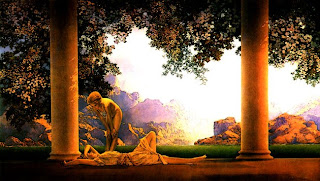Oh, my, what big eyes you have, little one...


With the exception of the last picture, the first two were taken as he was moving or about to move.




 (which would be a must have for a car of this size), overhead airbags, 4-Wheel ABS, and miscellaneous add-on's that probably do nothing more than drive up the price. Forbes.com listed the MINI Cooper as one of top 13 most Fuel efficient cars.
(which would be a must have for a car of this size), overhead airbags, 4-Wheel ABS, and miscellaneous add-on's that probably do nothing more than drive up the price. Forbes.com listed the MINI Cooper as one of top 13 most Fuel efficient cars.




Despite the fact that some of those "blocks" have some kind of aesthetic redemptive value, when I look at the image of Most Holy Trinity Church, I feel like I have to forgive someone.
As I stated in a previous post, I DO like modern architecture. Some of the most inventive, hypnotizing, and dynamic structures societies have erected fall under the "modern" or "post-modern" classification of architecture. For a sacred environment, I also have made no qualms about passionately preferring traditional edifices over the more progressive arrangements that characterize so many churches this day and age (especially in Europe).
MIT's Stata Center
For those of you who find secular avant-garde architecture appalling, please turn away immediately. The following images might be too disturbing.
Below is MIT'S Stata Center. Opened for occupancy in 2004, the center houses the Computer Science and Artificial Intelligence Laboratory, the Laboratory for Information and Decision Systems, as well as the Department of Linguistics and Philosophy.

For me, the Stata Center symbolizes a society within a society. The design implies that what takes place inside this structure is different than what takes place anywhere else, and that conventional thought is turned completely upside down within it. It has whimsical, structural allusions to fairytale cottages or to something you might see inside Willy Wonka's Chocolate Factory. Unfortunately, in 2007 MIT sued Frank Gehry - the designer of the center - as well as the construction company who built it for supposed design and structural flaws.
 Let me pose to you this hypothetical scenario. Let's pretend a guy named Tom was giving serious consideration applying to a make-believe school of architecture, at a make-believe university situated in the make-believe city of Las Vegas. Tom is having difficulty making a decision because he is uncertain about this coarse of action on many levels. Perhaps the biggest befuddlement for make-believe Tom is whether it's prudent to judged an entire career in a specific field by the classes that ultimately yield a degree in that same field. See, our hypothetical Tom isn't sure he might enjoy the classes, but thinks that after graduation the career itself might be considerably more creative and satisfying than the courses he took in the make-believe school.
Let me pose to you this hypothetical scenario. Let's pretend a guy named Tom was giving serious consideration applying to a make-believe school of architecture, at a make-believe university situated in the make-believe city of Las Vegas. Tom is having difficulty making a decision because he is uncertain about this coarse of action on many levels. Perhaps the biggest befuddlement for make-believe Tom is whether it's prudent to judged an entire career in a specific field by the classes that ultimately yield a degree in that same field. See, our hypothetical Tom isn't sure he might enjoy the classes, but thinks that after graduation the career itself might be considerably more creative and satisfying than the courses he took in the make-believe school.
 Matthew Fox (Defrocked and ousted)
Matthew Fox (Defrocked and ousted) Anthony de Mello, S.J. (Works condemned)
Anthony de Mello, S.J. (Works condemned) Pierre Teilhard de Chardin (Censured)
Pierre Teilhard de Chardin (Censured)
I'm reminded of these images:
Stars







Displayed above are a few of the works by twentieth century painter and illustrator Maxfield Parrish (1870-1966). Note the striking colors ("Parrish blue"), the romance, and paradisiacal setting of each of these pieces. By developing a technique that combined the usage of oil, varnish and photography, Maxfield Parrish was in a league of his own.
While the words of Nessum Dorma might bear little relevance to any of these paintings, with it's sweeping romanticism and beautiful note progression, it provokes an Elysium evocation that is also recognizable in Perrish's works.
 Actor Mark Wahlberg is Catholic and has a Rosary tattooed around his neck and on his chest. Is this anymore acceptable than if it had been a real Rosary instead of a painted one? Don't ask me what's at the end of it.
Actor Mark Wahlberg is Catholic and has a Rosary tattooed around his neck and on his chest. Is this anymore acceptable than if it had been a real Rosary instead of a painted one? Don't ask me what's at the end of it. What about this guy? Singer George Michael wears not one, but TWO Rosaries around his neck. Is he even Catholic? Is he making a political statement? This type of Rosary-wearing reminds me of some of the sacrilegious stunts Madonna used to pull off in the early to mid eighties during her incipient fame.
What about this guy? Singer George Michael wears not one, but TWO Rosaries around his neck. Is he even Catholic? Is he making a political statement? This type of Rosary-wearing reminds me of some of the sacrilegious stunts Madonna used to pull off in the early to mid eighties during her incipient fame.